Simply put, Thailand is a paradise for fruit lovers. An incredible array and superb quality of the quaint species and long-familiar tropical fruits alike are handy and reasonably priced all the way around Thailand. A diverse selection of fruits, vegetables, and herbs is easily found at numerous fruit shops, supermarkets, and marketplaces. Also, plenty of street vendors and hucksters sell seasonal fruits and veggies on sidewalks, in tourist spots, or right on the beaches, where tourists are. Thai vendors commonly sell 'ready-to-eat' fruit by hand or with a wooden stick in a plastic bag. Sellers may even invite you to sample some untamed exotic fruit. Undoubtedly, all kinds of Thai fruits, whether these familiar names like melon, apple, banana, mango, grapefruit (some call that citrus pomelo or pummelo) or the newly discovered exotic treats, will pleasantly surprise you.
Just keep in mind that numerous varieties of the same fruit might taste completely different. So keep sampling the treat whenever and whatever is ready to hand. It is also worth pointing out that such delightful Thai lime or lemon juices, which are widely available in bars, restaurants, and hotels, all along with the orange, mandarin, pineapple, banana, mango, papaya, watermelon, sugarcane, carrot, and many other freshly extracted fruits, herbs, and vegetables. Needless to say, the cheapest places to buy fruits and vegetables are fresh fruit markets. Still, the golden rule for choosing fruits (and sexy bargirls alike) is the more expensive, the better.
For instance, a so-called 'Floating Market' tour in Bangkok takes you by boat to the Damnern Saduak seasonal fruit and flower market flourishing at all times refer to the Guided Tours. Besides, take a look at the authentic Thai pictures, MPEG movie clips, and illustrations at the following titles Thai Culture and Traditions, Bangkok, and Pattaya, by all odds, for your fruitful vacation in Thailand, take advantage of this special travel promotion and enjoy the luxury and exotic Vacation Package to Bangkok and Pattaya.
Among numerous Thai-style salads, there is one that truly stands out à±¼ an exquisite well pounded green papaya salad called som tam in Thai. Walk down any Thai food market or bustling street, and you'll hear a steady knockdown blow as a portion of som tam gets ready. Thais like it spicy, mixing crunchy strips of unripe green papaya with fresh chilies, peeled garlic, teeny dried shrimp, roasted peanuts, long beans, and tomatoes, all of which are tossed with a salty-sour-sweet dressing made with fish sauce, lime juice, and palm sugar. Sweetness and sourness can vary a good deal, but spiciness is a must unless you opt for not-so-spicy. It's everything you'd want in a salad à±¼ refreshing, light, and quick to prepare.
|

Information and Visa Application Inquiries
Most Popular Delicious Thai Fruit
| Bananas are likely the most popular tropical fruit, and Thailand has around 20 varieties ranging from widely known large banana specimens with thick golden skins to tiny, sweet, and fragrant 'Finger Bananas', the same color but thinner peel. The giant leaves of naturally growing banana trees are seen far and wide throughout Thailand and are often used in Thai food preparations and decorations. The fruit is highly versatile in terms of how it is eaten. Besides being fresh at the peak of its ripeness, banana also turns up on the Thai table as smoked, dried, fried, grilled, or boiled in syrups or in coconut milk. Worthy to mention a so-called 'Banana Split' - banana crumbs pan-fried within a pancake, a delicious hot desert dish rather popular in Thailand, as well as banana juices and shakes. |
| Pineapple has been grown in Thailand for several centuries, especially in the sandy soil along sea coasts. On the way between Bangkok and Pattaya, you will see lots of road vendors selling top-grade pineapple from the nearby plantations. Thai pineapples are famous for their sweet taste and are found in wide varieties upon consumption. Presently, Thailand is the world's leading exporter of canned pineapple. Besides being eaten fresh or drunk as juice, the chopped fruit is often used as an ingredient of cooked meals such as main dishes of meat or seafood (shrimp, lobster, or fish) fried with pineapple. |
| Watermelon is certainly one of the most popular and widely available fruits. Thai watermelon is found in familiar ruby-red and at times, lemon-yellow colors. In Thailand, sweet and refreshing chunks of watermelon are an essential part of nearly every fruit platter all year around, although March is the peak season. The delicious watermelon juice is also extracted and widely sold as a beverage. |
| Coconuts along with the tall coconut palms are inescapable in Thailand. Thai coconuts are found in several varieties, most commonly consisting of the sweet light juice surrounded by the white flesh tender, both of which are often eaten fresh. Sellers normally carve big coconuts into cone-shaped containers, making them ready to eat or drink. Naturally, coconut milk is a rather obvious ingredient in countless varieties of Thai meals: obviously soups, main dishes, as well as prominent desserts. |
| Thais regard the durian as the king of fruits! Delicacy consists of several large inedible seeds covered with the creamy golden flesh, wholly hidden within the spiny exterior of this really unique and exotic treat. Durians are easily noted for their highly pervasive and unpleasant smell, despite that, the taste of durian is well worth all efforts to ignore its stink to sample the subtle flavor with the distinctive smooth texture of this incomparable tropical fruit. In Thailand, sellers often retail durians as 'ready to eat' since it's rather awkward getting through its rough rocklike exterior. The species of Thai durians are found in several varieties, the most popular one being mon thong. |
| Most grape varieties in Thailand were developed at the Kasetsart Agricultural University to thrive under tropical conditions. Both red and green species are sweet and delicious whether eaten fresh or drunk as juice. At the time being, Thai wine is primarily used for cooking. However, perpetual attempts have been made to develop special sorts of grapes suitable for making high-quality wines. |
| Originally perceived as Chinese fruit, lychee or leechee is a slender brittle shell enclosing a sweet jellylike pulp and a single seed. Today, this lucrative delicacy is becoming rather big-name. Nowadays, several varieties of Thai lychee are successfully growing in northern Thailand and are available both fresh and canned. |
| Rambutan is one of the most attractive and popular delicacies in Thailand. Visually it reminds a hedgehog, a ruby-red oval nearly the size of a ping-pong ball covered with soft greenish spines. The skin, however, is easily peeled off revealing its pleasant jellylike pulp, which tastes like a combination of sweetness traces by tartness and a single inedible seed. Originally known as Malayan fruit, Thai rambutans are noted for their sweetness and are most plentiful from May to September, though as canned, it's handy at all times and exported in significant quantities to many countries worldwide. The main growing areas of Thai rambutans are Chanthaburi and the southern province of Surat Thani. |
| Mango, the large oval smooth-skinned specimen with juicy aromatic flesh and a large hairy seed definitely belongs among the finest tropical fruits. More than a dozen mango varieties are growing in Thailand, some of the best were locally developed or hybridized. The "Nam Dawk Mai", "Ok Long", "Keow Savoey" (green and sweet with a powdery texture), and other light-colored varieties of Thai mango are particularly delicious treats. Prepared as the "Mango and Sticky (glutinous) Rice" it's best known and a much popular choice of dessert. Also, some sorts of mango with a delicate sour flavor are often eaten as a condiment to refine the dish taste sensation, or as salads such as the yam ma-muang. Some mango varieties are pickled, soaked in sugar water, salted, dried, or turned into jams and chutneys. Mango is a major fruit crop in Sakhon Nakhon province in the North, Yasothon, Si Sa Ket, and Chaiyaphum in the Northeast, Prachin Buri in the East, and Nakhon Pathom, Ratchaburi, and Chon Buri in Central Thailand. |
| Mangosteen is one of the tastiest fruits found in Thailand. This 2-3" in size tropical fruit has thick and stony dark-red skins with juicy white flesh suggestive of both peaches and pineapples. When slit through its skin, it easily opens revealing garlic alike edible segments of its delicious flesh. Surat Thani province in the south of Thailand is the home of the mangosteen. |





Foremost, take advantage of this special travel promotion and enjoy the fruitful, fun, and exotic
Thailand Vacation Package to Bangkok and Pattaya at incredible savings!![]()
To navigate across the site use our split Navigation Menu, or just...
Can't Find What You're Looking For à±¼ Tell Us What You Want.
Let Your Friends Know à±¼ Invite Them to Visit Us!


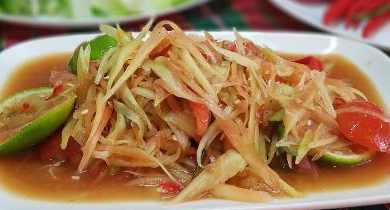
 Season: Year-around
Season: Year-around Season: Year-around
Season: Year-around Season: Year-around
Season: Year-around Season: Year-around
Season: Year-around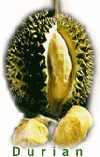 Season: May to August
Season: May to August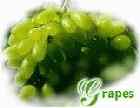 Season: September to April
Season: September to April Season: April to June
Season: April to June Season: May to September
Season: May to September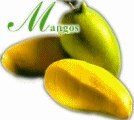 Season: March to June
Season: March to June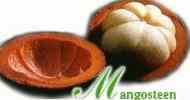 Season: April to September
Season: April to September